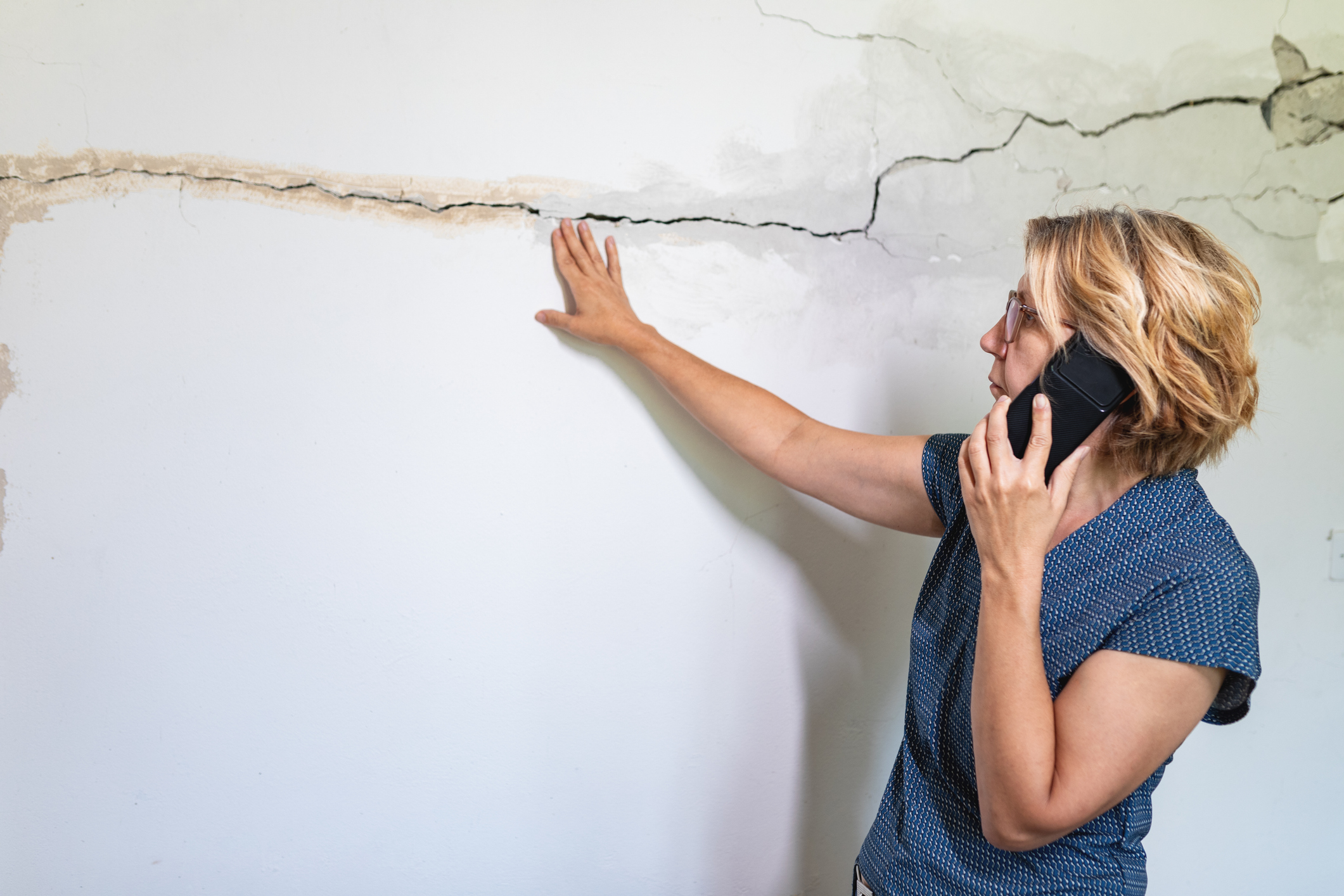The damage an earthquake can cause to your home really seems like something that home insurance would cover, but many insurance companies stopped covering earthquakes in the 1990s, according to FEMA.
As a result, only a fraction of homeowners living in earthquake-prone areas are covered.
California, for example, experiences 90% of all the earthquakes that happen in the United States. Yet, just 13% of the state’s residents have earthquake insurance.
Sign up for Kiplinger’s Free E-Newsletters
Profit and prosper with the best of expert advice on investing, taxes, retirement, personal finance and more – straight to your e-mail.
Profit and prosper with the best of expert advice – straight to your e-mail.
For homeowners whose house or belongings were damaged in that San Diego quake that recently shook southern California, that means they’re paying out of pocket to cover those losses.
But California isn’t the only state where earthquakes happen. According to the National Association of Insurance Commissioners (NAIC), there is at least some risk of an earthquake in 42 states across the country.
While the risk is notably higher in some states compared to others, earthquake insurance isn’t just for Californian homeowners.
Which states are most likely to have earthquakes?
(Image credit: Getty Images)
According to the U.S. Geological Survey, 16 U.S. states have an above average risk of experiencing an earthquake:
- Alaska
- Arkansas
- California
- Hawaii
- Idaho
- Illinois
- Kentucky
- Missouri
- Montana
- Nevada
- Oregon
- South Carolina
- Tennessee
- Utah
- Washington
- Wyoming
The likelihood of an earthquake varies considerably among those states, with states west of the Rockies, especially California, having the highest risk.
But states in central and eastern parts of the United States face their own unique risks: earthquakes are less common, but when they do happen, they tend to spread out further from their epicenter and houses are less likely to be built to withstand the shaking.
If you live in any of these states and you don’t currently have earthquake insurance, it’s time to start looking into your coverage options.
In some cases, you may be able to simply add the coverage to a standard home insurance policy. If that’s not an option, you’ll have to buy separate earthquake insurance.
Either way, you can start your search by using our Bankrate-powered tool below to get quotes on standard home insurance:
Which states are least likely to have earthquakes?

(Image credit: Getty Images)
While it’s still worth looking into your regional risk of an earthquake even if you don’t live in one of the 16 higher risk states, there are a few states in the U.S. where earthquakes are very unlikely:
- Florida
- Iowa
- Minnesota
- North Dakota
- Wisconsin
If you live in one of these states, you can probably skip earthquake insurance. Though, it’s still worth looking into other types of land movement coverage like landslides or sinkholes – both of which are also surprisingly not covered by standard home insurance.
What does earthquake insurance cover?

(Image credit: Getty Images)
An earthquake insurance policy often covers any damage that results directly from the earthquake itself or its aftershocks, but not damages that would be covered by your standard home insurance.
Here’s a breakdown of what a typical policy might include:
- Earthquake insurance covers damage to the insured property that directly resulted from the ground shaking. That might include things like a cracked foundation, crumbling exterior or belongings that broke as a result of falling during the quake.
- It may also cover your living expenses if you can’t live in your home while it’s being repaired, up to a specified limit.
- For repairs of covered damage, the policy will also typically cover the cost of building code upgrades and emergency repairs.
- Damages caused by aftershocks within about 72 hours of the initial earthquake can usually be lumped together into a single claim (with a single deductible).
- For renters, the coverage only applies to your personal property, not to the building itself. You may also be able to add loss of use coverage to pay for any living expenses if you have to move out while the landlord makes repairs.
- Earthquake insurance does not cover damage from disasters that might be triggered by an earthquake, like fires or water damage resulting from a water pipe that burst during the quake. For those, you’d file a separate claim with your standard home insurance.
You’ll usually see a deductible of between 2% and 20% of the total insured value. The higher the deductible, the more you’re agreeing to pay out of pocket in the event an earthquake damages your home.
You might even see separate deductibles for separate types of coverage, such as the house itself, your belongings inside and any separate structures outside.
How much does earthquake insurance cost?

(Image credit: Getty Images)
A typical earthquake policy will cost between $0.50 and $15 per $1,000 of coverage, according to the Insurance Information Institute.
So for $300,000 worth of coverage, you might see a quote ranging from $150 up to $4,500 depending on where you live, the type of home you live in, what kind of coverage you want and other factors.
In California, you can expect to see the highest premiums, with earthquake policies costing above $1,300 per year on average, according to Lending Tree.
In Texas, you can expect to pay between $500 and $800 per year for earthquake coverage. On the East Coast, premiums are typically cheap, averaging around $300 or less.
One way to lower your premium is to increase your deductible. If you live outside of California, where earthquakes are a risk but far less likely, opting for a higher deductible can be a good compromise.
You’ll keep your premium down, but still have coverage in the event of a once-in-a-lifetime disaster.
Another way to save is to have your home retrofitted. Seismic retrofitting involves things like installing bracing and bolting around your home’s frame and foundation to make the structure more resistant to earthquake damage.
This can not only lower your premium, but decrease your risk of experiencing serious damage during an earthquake.
Does renter’s insurance cover earthquakes?

(Image credit: Getty Images)
Not a homeowner? Even if you rent, earthquake insurance could still be a necessity. Like home insurance, standard renter’s insurance policies exclude earthquake damage.
If your landlord has earthquake insurance, that policy only protects the building itself, not your belongings.
So, if you’re renting in one of the higher-risk zones identified by the USGS, you should look into both renter’s insurance and earthquake coverage to make sure you’re fully protected.
Since you’re not paying for coverage of the building itself, you can usually get earthquake insurance for much less than a homeowner would pay.
Is earthquake insurance worth it?
Home insurance isn’t cheap (especially if you live in one of the eight states where premiums are highest) so if you’re hesitant about spending even more to add earthquake insurance, you’re not alone.
But the potential savings if you do have an earthquake can make that extra cost worth it if you live in one of the states where earthquakes are possible.
According to Home Advisor, the average cost to repair earthquake damage ranges from $5,000 to $25,000. Even if you live in one of the lower-risk states, the savings from a single claim could more than make up for years of premium payments.
